What happens and exactly who is liable when a utility pole or lamppost heavily laden with hundreds of pounds of wireless equipment comes down, injuring someone or damaging a resident’s home or property?
Who will assume financial liability for fire, loss of line workers’, public and environmental health, personal data breaches, and property devaluation caused by placing many microcells on our streets? When the city of Santa Fe, New Mexico decided to install small cells, the Mayor received this letter about liability from a lawyer.
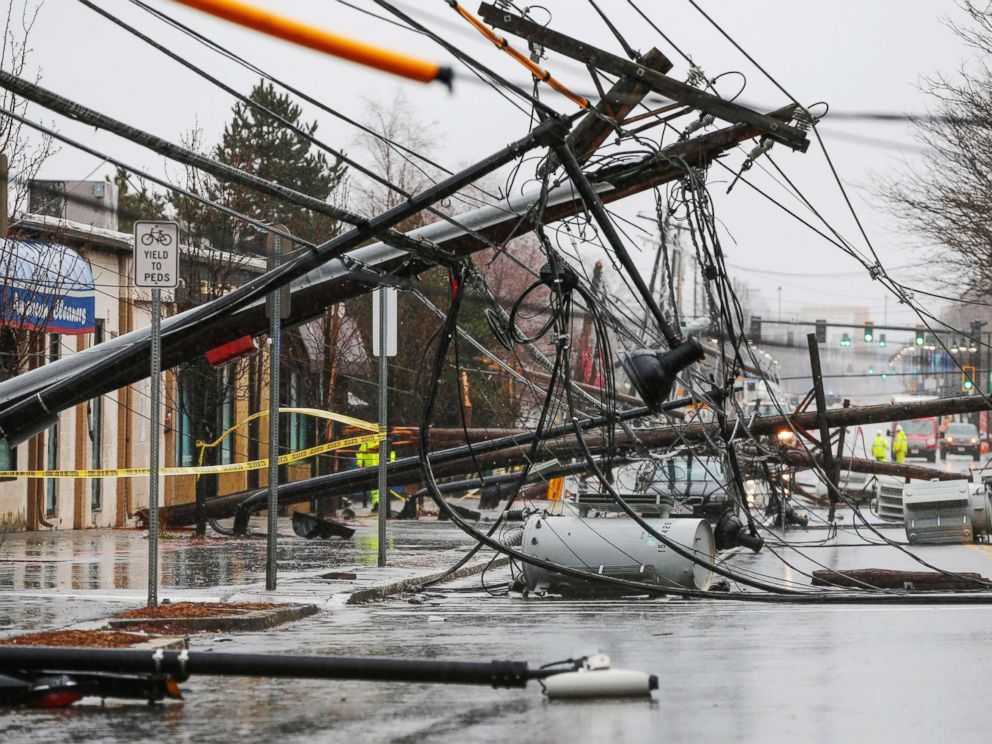
No Assurance of Insurance
If the telecoms are indemnified, then the city is left holding the bag. And it is unlikely the city’s insurance policy will cover any wireless health-related claims. Insurance companies now categorize wireless radiation as one of the top risks for insurers worldwide, and many companies, including Lloyds of London, will not cover claims resulting in injury or harm caused by electromagnetic radiation.
Informed Integrity
The Model Municipal Access Agreement (found here) was negotiated by the Canadian Radio and Telecommunications Commission (CRTC) and the Federation of Canadian Municipalities (FCM) in 2013 to facilitate telecom’s access to our rights-of-way. The Environment and Liability section of this agreement establishes that if municipal governments know that telecommunications equipment may cause environmental harm, but allow it to be installed anyway, they may be found negligent and held liable for damages.
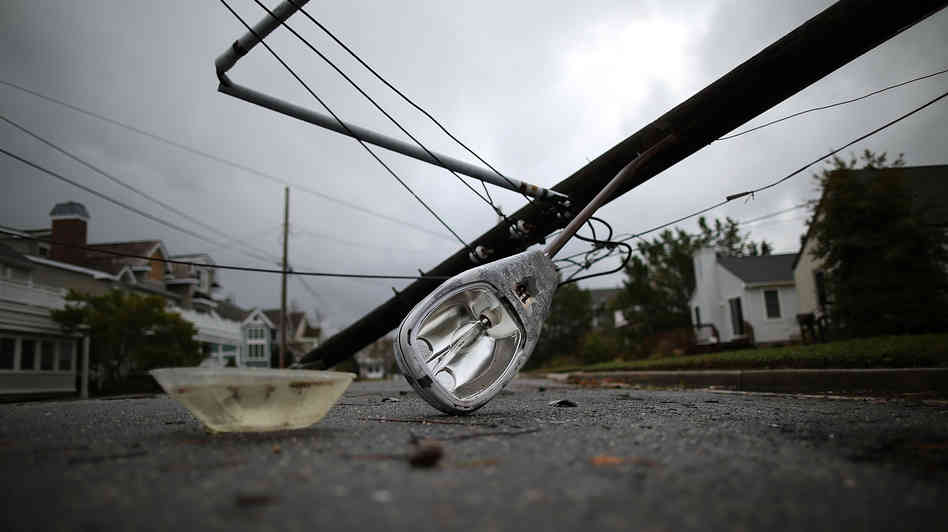
Once elected officials are made aware of the dangers posed by wireless tech, continuing to promote it may even result in charges of colluding in the suppression of information. Are leaders willing to trade their integrity, their objectivity, and ultimately their reputation for industry’s agenda?
Risky Business
Telecom providers know that wireless technologies are risky business, and their annual reports admit their fears. In this excerpt from their 2019 Management Discussion and Analysis, TELUS warns shareholder that litigation due to data theft, electromagnetic radiation, microcell siting issues, and more could eat into their profits, and that “Readers are cautioned not to place undue reliance on forward-looking statements.”

Risk Management
Risk management from a health and safety perspective has the primary objective of eliminating or minimizing the risks of harm. Drawing on data from over 3000 scientific research papers on non-ionizing electromagnetic radiation, scientist Steve Weller created a power-packed presentation on wireless technology and Risk Management in 2018. Some of his slides are below. The takeaway – there is sufficient evidence of harm to support governments in taking a precautionary approach to installing wireless transmitters on our streets.
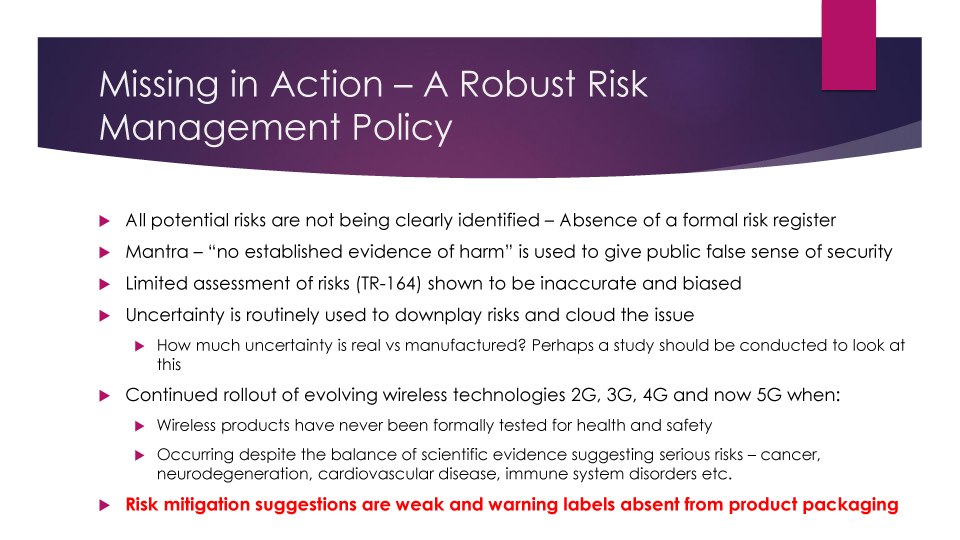
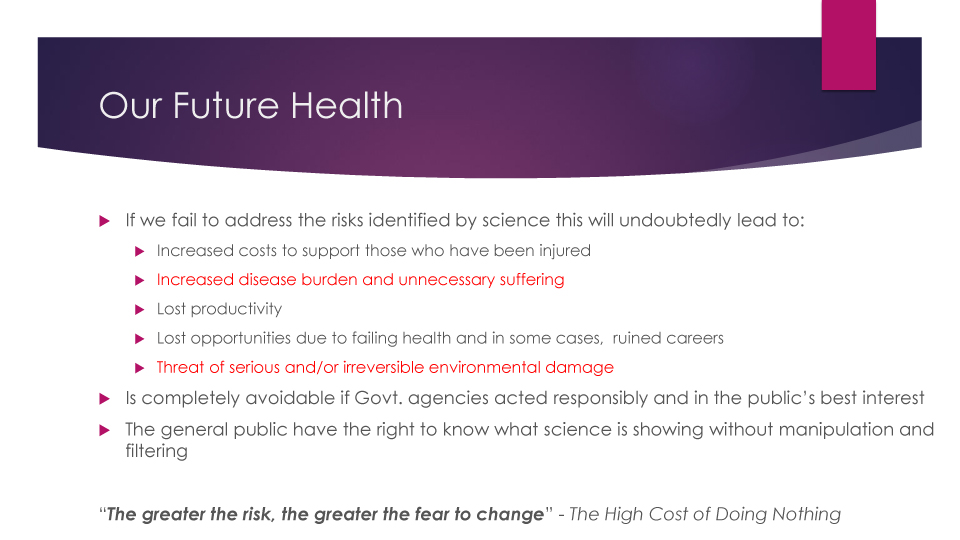
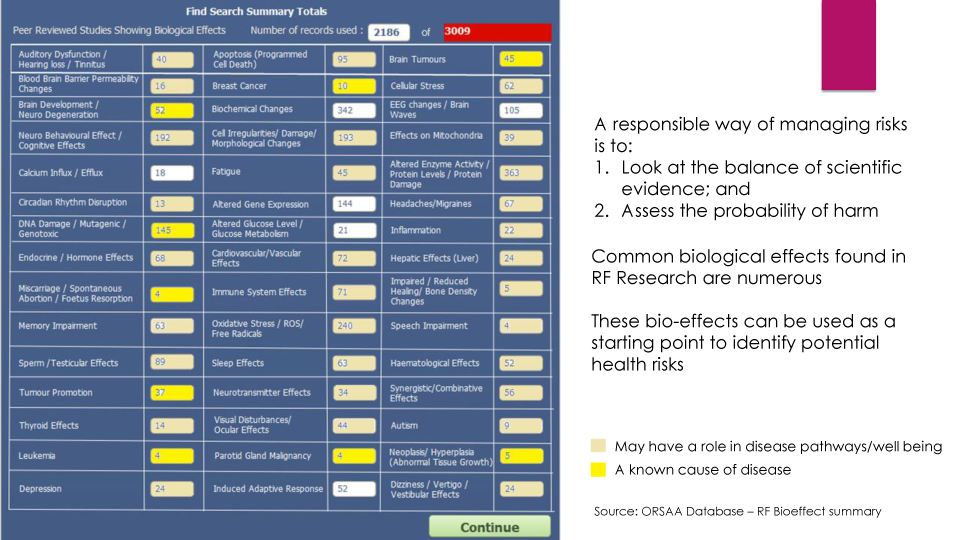
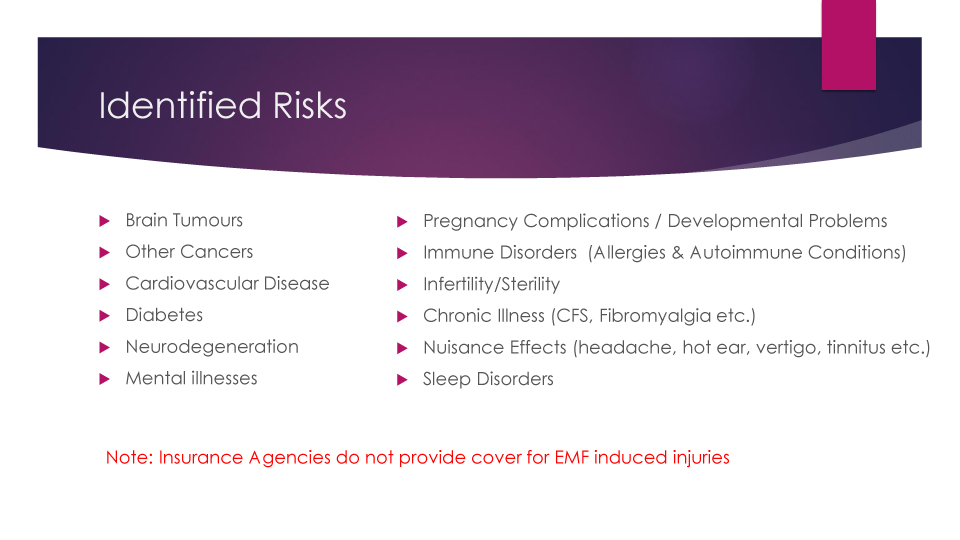
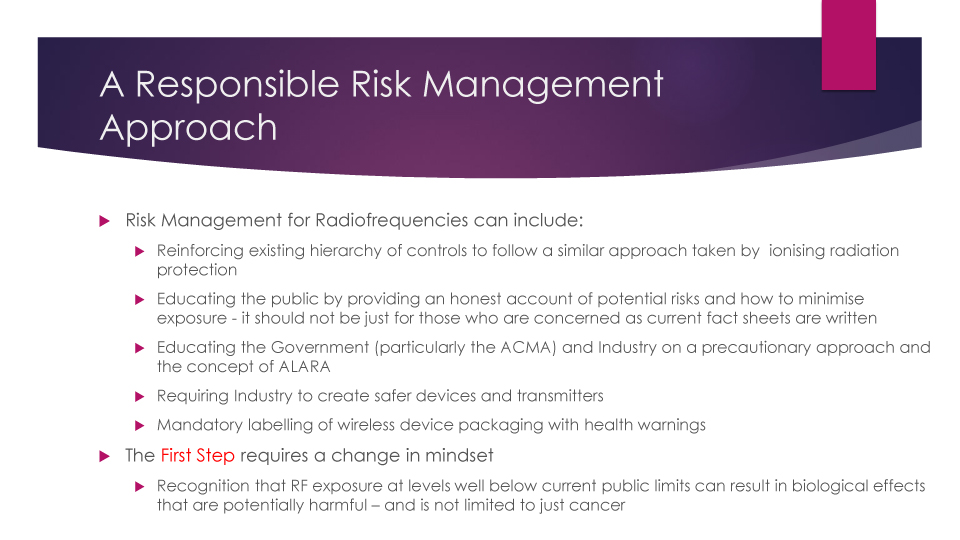
It may be time for elected leaders – and all of us – to get our heads out of the sand.
Resources on LIABILITY
Canada’s Cellphone System Vulnerable in Disasters, say Experts
Telecom and Insurance Companies Warn Of Liability and Risk
The Hazards Microcell, Wireless Transmitters, & 5G pose to Utility Line Workers
Swiss Re Institute ~ SONAR 2019: New Emerging Risk Insights

